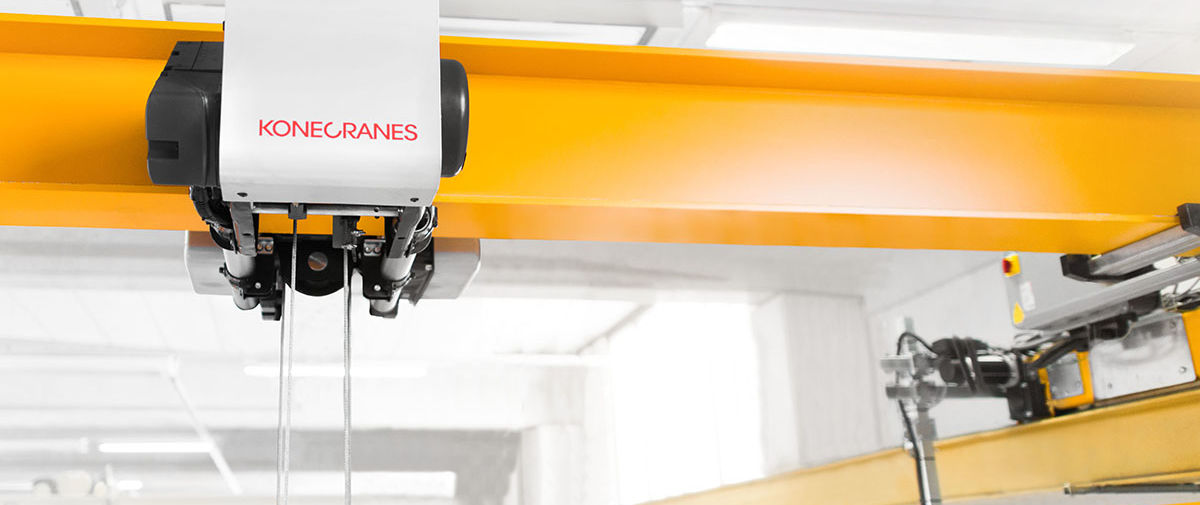Overhead cranes, or bridge cranes, serve a wide variety of industries and they are generally designed in four primary configurations. Determining the best set-up for your operations depends on your required capacity, duty class and lifting height, and on whether you’re installing the crane in a new or existing building.
Joe Otten, Director Learning and Development
As you go about determining the types of overhead cranes required for your needs and facility, here’s what you should keep in mind.
Top running or under running
The two primary configuration options for overhead cranes are top running and under running (also called underhung). On a top-running crane, the end truck rides on top of the runway beam. On an under-running crane, the end truck rides on the lower flange of the runway beam. Each has their advantages.
An underhung crane typically allows much better end approach for the hoist. That is, it allows the hoist to get closer to the end truck or end of the runway than is possible with a top running crane. Underhung cranes tend to be more cost effective than top running cranes. Also, if your operation calls for you to be able to transfer hoists along bridges to interconnected monorails, you need to have an underhung style of overhead crane.
A top-running crane has the advantage of generally being able to lift heavier loads than underhung cranes. Additionally, a top-running crane offers greater headroom than an under-running crane.
Single girder or double girder
The other two configuration options for cranes are single girder or double girder, both of which can be used with either top or under-running overhead cranes.
As you might expect, double-girder cranes support higher capacities, but are more expensive. Additionally, double-girder designs typically allow greater hook height than single-girder designs, as the hoist can be mounted on top of the bridge rather than underneath.
Single-girder cranes, meanwhile, cost less but generally have lower capacities than double-girder cranes. On single-girder cranes, the hoist always rides the bottom of the crane girder in both top-running and underhung configurations. This creates a bigger operating envelope for the hoist and is a solution for applications where headroom is not a limitation.
New or existing building
Another major consideration for determining the most appropriate types of overhead cranes for your operations is whether you’re equipping a new or existing building. With an existing building you’ll have to work with the available clearances and choose the configuration accordingly. With a new building you have greater flexibility, so long as you involve a crane provider early in the planning process. A crane provider can help you save on building costs by designing a crane that provides the coverage you need, while making the building no higher than necessary to accommodate the crane.
Check out our Crane Advisor to help you choose the right crane for your operations
